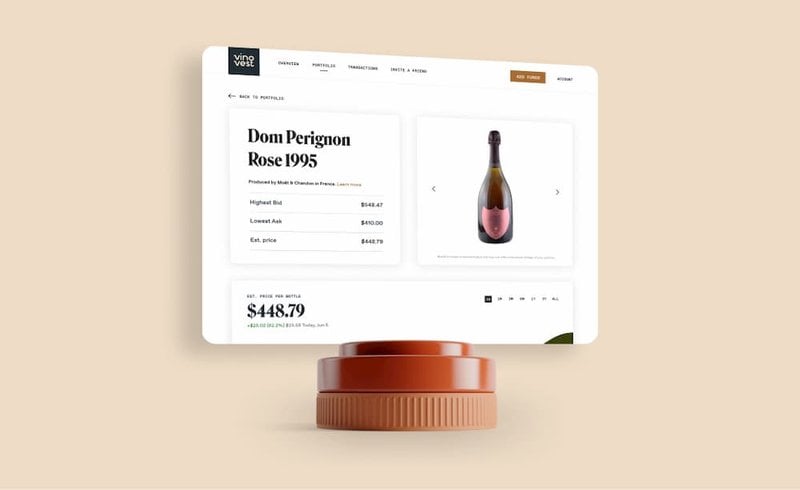How Many Grapes In A Bottle Of Wine
How many grapes in a bottle of wine?
Generally, it takes about 600–800 grapes to produce one bottle of wine.
But this number is dependent on several factors like the grape variety, vineyard location, winemaker techniques, and more.
In this article, we’ll cover what factors determine the number of grapes in a bottle of wine. We’ll also look at a few other interesting facts about wine grapes.
Further reading
- Explore How Many Glasses there are in a Wine Bottle.
- And prepare for your next special occasion by discovering How Many Bottles Are In A Case Of Wine.
How Many Grapes In A Bottle Of Wine

A 750 ml bottle of wine usually contains about 600–800 individual grapes, approximately 10 wine grape clusters.
However, this number can fluctuate based on the:
- Grape variety: The number of grapes in a wine bottle depends on the grape varieties used to produce the wine.
For example, Petite Sirah and Cabernet Sauvignon are thick-skinned grapes that produce less grape juice, while varieties like the Pinot Noir and the Concord grape are thin-skinned and produce more juice.
- Weather conditions: Another factor is the weather and growing conditions. Wine grapes that receive an abundance of rainfall are usually plump, while grapes that experience long, hot summers are more shriveled and contain less grape juice.
- Soil type: The type of soil the fruit is planted in also affects the yield. For example, Cabernet Sauvignon thrives in well-drained, nutrient-poor soils. So, Cabernet planted in alluvial soil in a warm climate like Napa Valley will produce a higher yield than Cabernet Sauvignon grown in the rich clay soils in Barossa Valley or Pomerol.
Additionally, if the soil contains too many nutrients, it can cause the fruit to grow too quickly at the beginning of the year. As a result, the grapes won’t receive the summer sunlight they need to ripen properly.
- Winemaking techniques: The pressing process used during winemaking can also affect the number of grapes in a wine bottle. For example, wines made using the free-run method will usually require more grapes since this technique usually leaves behind some of the grape juice from the crushed grapes.
Additionally, a winemaker who uses the Basket Press can experience a 5–10% decrease in yield compared to the Bladder Press.
Other Interesting Facts About The Number of Grapes in a Bottle of Wine

Here are some other fascinating facts about the number of grapes in a bottle of wine:
- A 750 ml bottle of wine usually contains 2.5–2.8 pounds of grapes. This means each five-ounce glass of wine has a little over half a pound of grapes.
- Four grape clusters make one bottle.
- There are 75 grapes in one grape cluster.
- One grape cluster fills one wine glass.
- One vine makes 10 bottles of wine.
- There are between 35–60 clusters of grapes per vine.
- 1,200 grape clusters make one barrel.
Does the number of grapes affect the price of the bottle?
One of the factors affecting the price of a wine bottle is the number of grapes a vineyard produces per acre and the quality of those grapes.
How do wine production quantities affect the bottle price?
A vineyard with lower output (producing fewer grapes) will usually produce wines with more flavor and higher alcohol content. In comparison, vineyards with a higher output will typically produce more diluted wines.
As a result, bottles with a higher price tag usually come from vineyards that produce fewer, higher-quality grapes.
How much do wine grapes cost?
To give you an idea of the price of wine grapes, here’s approximately how much the California wine industry spent on grapes in 2020:
- $790 on one ton of red grape varieties
- $555 on one ton of white grape varieties
- $160 on one ton of table grapes
- $250 on one ton of raisined grapes
Now, to complete the picture, let’s also look at how grapes are grown and how wine is made.
How Are Grapes Grown and Processed To Make Wine?

Here are the typical steps in the grape growing process:
- Planting: The suitable soil is determined and each grape vine is planted and covered with a carton to provide warmth and protection.
- Pruning: In the winter the grape grower removes any excessive vine shoots.
- Flowering and fruit set: The grape grower sees the first buds in March. In May, there are green clusters of grapes on the vines.
- Veraison: This is when the green grapes transform into plump clusters. Red grape varieties like the Cabernet Sauvignon turn from green to purple, and white grape varieties like the Sauvignon Blanc turn from bright green to golden green.
What happens to the wine grapes once they’ve been harvested?
Once the grapes have been harvested, the winemaking process begins.
Here are the typical steps:
- Pressing: Whole clusters of grapes, skins, stems, and seeds are pressed. The juice from the crushed grapes is placed into an oak barrel or tank for fermentation.
- Primary fermentation: The yeast converts the grape juice sugar into alcohol (wine) and carbon dioxide.
- Aging: The wine ages into a stainless steel tank or oak barrel. Winemakers also add a minimal amount of sulfur to the wine to stabilize it.
- Bottling: Before bottling, winemakers usually do wine tasting to ensure the flavors are right. The wine is then racked and filtered to remove sediment and clarify the wine. Finally, the wine is bottled, and a wine label is placed on it.
Add Any Fine Wine To Your Collection With Vinovest
It takes about 600–800 grapes to make a bottle of wine. However, this number depends on the vineyard location, climate, type of wine grape, and vineyard terroir.
Additionally, the number of grapes in the bottle is one of the many factors that affect the price of the wine.

If you want to invest in fine red wine, white wine, sparkling wine, and others, you should consider partnering with a reliable, online wine investment platform like Vinovest.With Vinovest’s expert’s help, you can build a fine wine collection in a few clicks!



